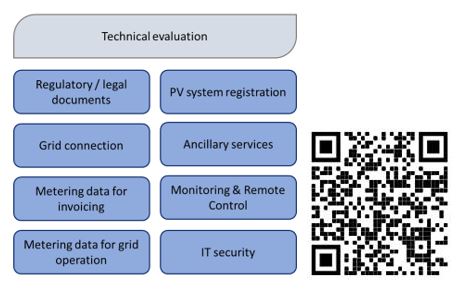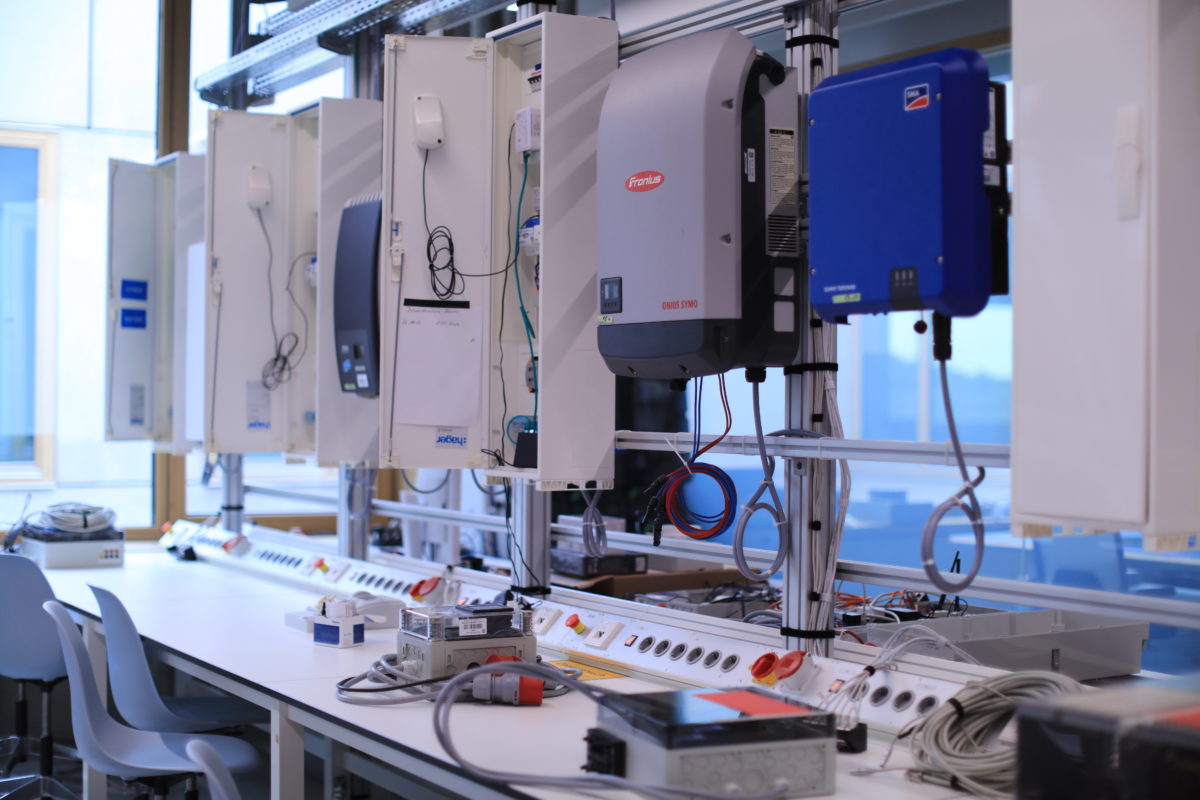A survey is now being conducted to support an in-depth analysis of possible scenarios of PV integration into smart grids in the different International Energy Agency (IEA) countries. The results of the survey will be used to develop recommendations for the integration of PV systems into smart grids and to identify country-specific features of PV integration. To jump straight into the survey, click here, or read on for more information.
PV integration
As the development of renewables is drawing more attention, the integration of PV systems at all system levels has automatically become a major topic. With a view on the current innovations regarding the digitalization of photovoltaic systems, it seems that we are not yet profiting from the potential synergy of PV integration into smart grids. Currently, the integration of PV systems into distribution grids is still mainly done following a “fit and forget” approach. However, with increasing grid penetration, the fluctuating energy feed-in from PV systems poses many challenges for existing grids and possibly also for market processes.
In the past, energy was provided by a few hundred large, centralized power plants and the energy flow was predominantly through a one-way street from the transmission grid to the distribution grid. However, with the increased use of renewable decentralized energy systems – primarily wind power and solar power plants – the majority of energy provision is shifting to the distribution grids. However, the distribution grids were not initially built to harmonize modern renewable systems. Moreover, the conventional demand-side systems are turning into more intelligent local systems combining generation units and consumption devices. This new role is defined as “prosumer”. These systematic changes require the utilization of advanced technologies, the implementation of new applications and concepts, as well as the realization of more information transparency in the distribution grids.
The word “integration” is quite a general term, which represents many different conceptual, technical, and business processes involving diverse participant roles. This includes the interconnection with prosumer energy systems, PV system registration, validation of physical interconnection, bidirectional communication, data transition and status monitoring, intelligent control and PV curtailment, interface to the balancing power market and local energy market, the data provision for grid simulation and state estimation, etc.
Examples of solutions
The integration of PV systems into smart grids starts already behind the meter. Today’s PV inverters increasingly become the “heart” of the prosumer energy system. In addition to the sole conversion of solar energy fed into the electric grid, PV inverters integrate battery storage, optimize EV charging and take control over flexible loads based on the local weather forecast. When interconnecting a PV system to the electrical grid, registration is necessarily required by the grid operator to ensure grid stability. Additional registrations are often needed, for example, for funding databases or re-dispatch, so the paperwork load is increasing.
For 100%-renewable-based power systems, many countries and grid operators are discussing and defining solutions for PV curtailment. In addition, the active control over millions of power systems should take cyber threats into account. The design of the Smart Meter infrastructure in Germany, led by the Federal Office for Information Security (BSI), regulates the control of small PV systems starting from 7 kWp using two-way communication. The latest research project demonstrated the capability of this Smart Meter infrastructure to integrate small PV systems into the balancing power market.
All these processes and examples highlight the potential of effective integration of PV systems into Smart Grids from the view of different stakeholders; in the era of digitalization, cybersecurity measures need to be considered to ensure a safe operation of the PV systems and secured data transition via remote telecommunication connections.
We appreciate your valuable contribution and feedback that help us gain deeper insights into the current state-of-the-art solutions, possible improvements, and potential risks, as we move toward future sustainable energy systems with high PV penetration in the era of digitalization and energy transition.
IEA PVPS Task 14 Survey – your opinions are important
As an active member in the IEA PVPS Task 14 program, the Smart Grids Research Group at Ulm University of Applied Sciences in Germany has created two surveys to collect diverse perspectives from organizations of different roles in the PV industry. The survey results will be used for an in-depth analysis of possible PV integration scenarios and to derive PV integration recommendations for future smart grids. Both questionnaires can be easily accessed online – we would like to invite you to join us and share your experiences with other experts.
Detailed information on the survey (including the word template and a short instruction) can also be found on the Task 14 website:
High-level questionnaire: Opportunities and Risks of PV in Smart Grids

This high-level questionnaire is targeted at everyone working in the PV, utility and digitalization branch. It mainly addresses personal opinions on the opportunities and risks introduced by PV in smart grids, such as which new concepts can be considered as a feasible solution and how should we assess the associated cyber security issues. You are sincerely invited to participate.
Use Case collection: Technical Evaluation

The Use Case collection aims at evaluating realized examples from the integration of PV systems in the Smart Grid, while taking regulatory and technical aspects into account. Share your experiences with PV in Smart Grids via the link of this survey or with a word template available on the Task 14 website. Alternatively, you can just describe the work on PV integration into Smart Grids of your organization or in your country and send us the report or documentation of your projects.
ENDING:
This article was contributed by IEA PVPS Task 14 – Solar PV in the 100% RES Power System. All filled questionnaires will be collected, evaluated, and published as a part of the contents in the final report of subtask C – PV in the Smart Grid. Further information on Task 14 activities can be found in Task 14’s recent reports.
By Prof. Gerd Heilscher and Shuo Chen
Contact: shuo.chen@thu.de
The views and opinions expressed in this article are the author’s own, and do not necessarily reflect those held by pv magazine.
This content is protected by copyright and may not be reused. If you want to cooperate with us and would like to reuse some of our content, please contact: editors@pv-magazine.com.



1 comment
By submitting this form you agree to pv magazine using your data for the purposes of publishing your comment.
Your personal data will only be disclosed or otherwise transmitted to third parties for the purposes of spam filtering or if this is necessary for technical maintenance of the website. Any other transfer to third parties will not take place unless this is justified on the basis of applicable data protection regulations or if pv magazine is legally obliged to do so.
You may revoke this consent at any time with effect for the future, in which case your personal data will be deleted immediately. Otherwise, your data will be deleted if pv magazine has processed your request or the purpose of data storage is fulfilled.
Further information on data privacy can be found in our Data Protection Policy.